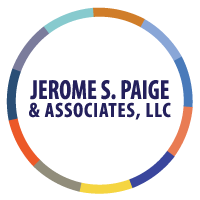“Trust” is an essential and popular idea, as indicated in the report by Deloitte, “Can you measure trust within your organization?”
Trust & Profit
For Deloitte, the more we measure trust, the more we’ll be able to maintain and improve our profits. According to Deloitte, trust is an “asset” because it helps
“create positive impacts on a company’s bottom line. It also creates a layer of resilience that protects the organization against potential breaches of trust.”
What’s the foundation of an organization’s “trust asset? It depends on:
the needs and perspectives of an organization’s different stakeholders—board members, investors, customers, suppliers, and employees—so the relative impact of trust-building actions must be framed and viewed through the lenses of these stakeholders as well.
Deloitte gives us a new mantra: Trust, Resilience & Profit.
Comparison of Trust Concepts
One purpose of our book, Making Trust Happen! How To Think and Talk About Trust & Experience and Create It provides a framework to unravel what we mean when we use the concept “trust.”
We illustrate below how our concepts of trust relate to Deloitte’s. While Deloitte considers external and internal stakeholders, we can extend our interior ideas externally. Below we correlate some of the concepts in the Deloitte model and ours.

Trust Performance & Trustworthiness
“Trust performance” is key to the Deloitte measurement framework. They
measured trust performance by asking executives to indicate the extent to which their organization performs a series of trusted actions related to each operating domain.
Within the framework of our model, we call “trust performance” “trustworthiness.”
The Deloitte model focuses on “trust actions” that lead to “trust results.”
A “trust action” is a behavior that demonstrates “a high degree of competence and right intent.” These actions lead to (i) capability, (ii) reliability, (iii) transparency, and (iv) humanity.
Trust: The Greatest Asset for a Complex Organization
We also see trust as an asset. “Trust is the greatest asset in a complex system like an organization.” For example,
Reinforcing-based trust creates positive trust feedback loops. When “ease of being” due to “trust” pervades the organization, the whole is greater than the sum of its parts. The outcomes are strengthened relationships, second guessing eliminated, and an easier organizational life.
Here’s another comparison between the two models.

Talk About & Experience Trust
Yes. It’s time to make trust happen and to measure it. Check out our book to explore our “trust glossary” and how we use “trust concepts” so that we can think and talk about trust & experience and create it.
